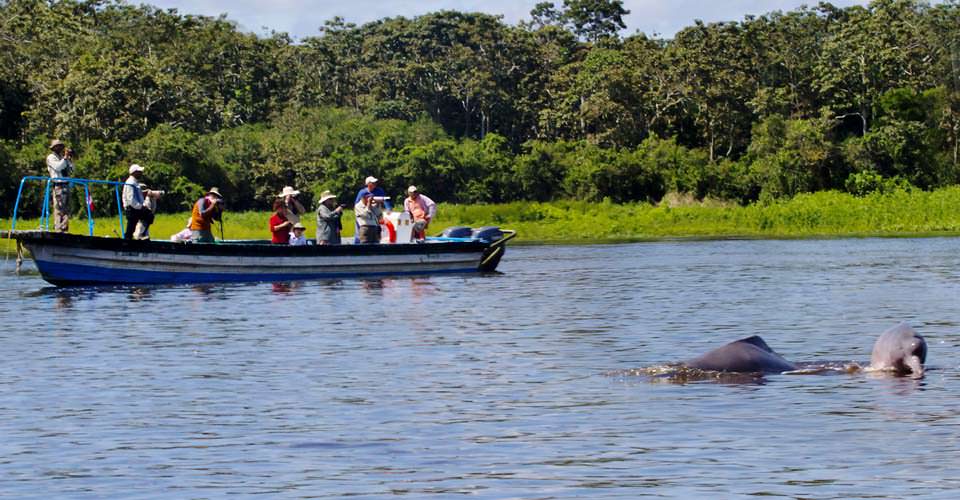Over one-third of all animal species in the world lives in the Amazon River system and its surrounding rainforest. Among all this flying, creeping, swimming, slithering, running, climbing fauna, the Amazon pink river dolphins are an especially appealing presence with their playful nature and pastel coloration.
Various species of freshwater cetaceans exist only in the rivers of Asia and South America. The first regional survey of river dolphins in the Amazon and Orinoco river basins, conducted in 2006 by the Omacha Foundation with support from the World Wildlife Fund, found the Amazon river dolphins to be faring far better than their Asian relatives. Although threatened by human activities such as fishing and dam building, their estimated population of around 40,000 means that conservation measures may yet save the species.
Adapted to hunting in the inundated rainforest, Amazon river dolphins differ anatomically from saltwater dolphins. Their long thin snouts enable them to ply tree roots and logs for food; they can simultaneously paddle forward with one flipper while paddling backward with the other, which enables them to leave the river channels and navigate through the trees during the floods of the wet season. Their coloration can range from grey to a spectrum of pinks: dull, pastel, or bright, depending on their age and the murkiness of the water. Exposure to bright sun causes loss of the pink pigmentation.
As a so-called umbrella species, healthy numbers of Amazon pink river dolphins indicate a healthy river ecosystem. Hopefully, increased understanding and maintenance of the delicate balances within the mighty Amazon basin will assure a rosy future for their kind.
Keep your eyes trained on the water for dolphins during our Great Amazon River Cruise!


























